Fast-growing trees are the most requested trees because the last thing any of us wants to do is wait for the tree to fully mature to reap its benefits. Most of us want fast growing trees for privacy, but others prefer fast-growing ones for shade or just for their looks.
No matter the reason, the best fast-growing trees provide plenty of benefits for homeowners, including adding depth and dimensions to a carefully landscaped yard. When you invest in a fast growing tree, you reap the benefits sooner, as the tree reaches full height in a shorter time than slow-growing trees.
Fast growing trees only thrive when they are properly planted, however. Proper planting ensures the trees become established well enough to grow several feet per year. Established trees grow even faster with appropriate care, such as building a stable root system early on and pruning the tree yearly.
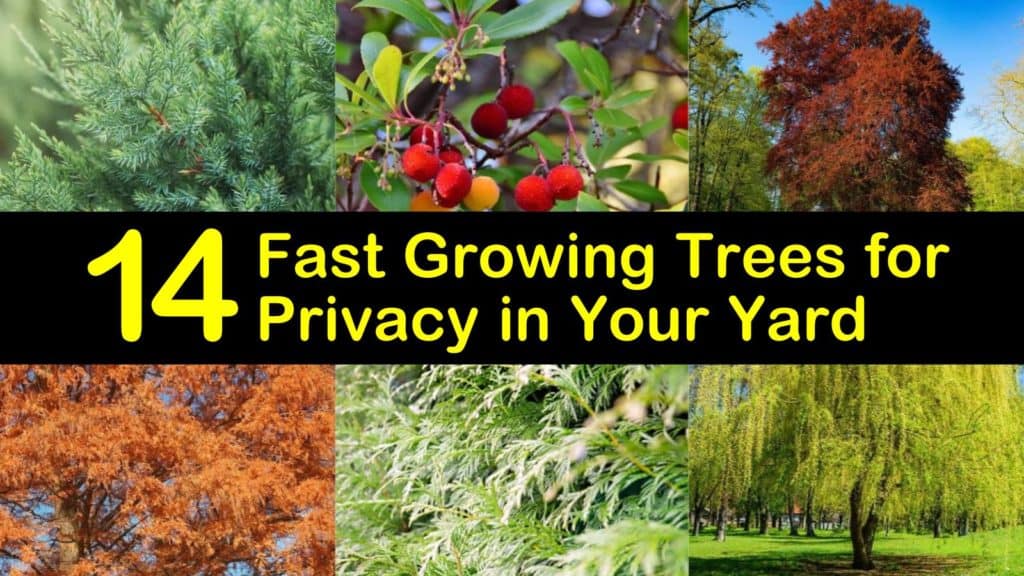
- Ensure Privacy with these Fast Growing Trees
- Best Time to Plant Fast Growing Trees
- Are there Drawbacks to Fast Growing Trees?
- Leyland Cypress (Cupressocyparis leylandii) – Fast Growing Tree for Privacy
- Weeping Willow (Salix babylonica)
- Green Giant Arborvitae (Thuja standishii)
- Fast Growing Tree for Shade – Hybrid Poplar (Populus deltoids)
- October Glory Maple (Acer rubrum)
- River Birch (Betula nigra)
- Quaking Aspen (Populus tremuloides) – Fastest Growing Tree for Yards
- Dawn Redwood (Metasequoia glyptostroboides)
- Nellie Stevens Holly (Ilex x ‘Nellie R. Stevens’)
- Fastest Growing Trees – Eastern White Pine (Pinus strobes)
- Emerald Green Arborvitae (Thuja occidentalis)
- Sky Pencil Holly (Ilex crenata)
- Boxwood (Buxus) – Fast Growing Trees for Privacy
- Strawberry Tree (Arbutus unedo)
Ensure Privacy with these Fast Growing Trees
Selecting the best trees for your yard requires a lot of thought as you want something that is going to work for your yard for years to come. At the same time, you don’t want a tree that causes nothing but problems. Before picking the best tree for your landscape, think about what you want to find the perfect match.
If you live in an area that gets a lot of rain, don’t choose one of the fast growing desert trees, as it won’t do well. On the other hand, a tree that needs moderate water amounts will not survive in drought-stricken areas either.
Of course, your tree growing capabilities are not restricted to privacy issues. Some smaller trees can serve as focal points in the yard, while you may also want to consider a few container fruit trees you can place on the patio or deck and bring in when the weather gets colder.
Another option, in addition to trees, is to consider the best hedge for privacy. Maybe you don’t want or need super-tall trees in your yard. A decently-sized hedge made up of some of the fastest growing shrubs may be just the option for you to separate you from your neighbors or to add an interesting border to the property.
Best Time to Plant Fast Growing Trees
Most home gardeners know and understand that spring is the best planting time for numerous seeds and bulbs, but they also think it’s the ideal time to plant everything. Trees are one of the few exceptions for spring planting. The reason why is spring often brings fluctuating temperatures and super wet soil, which hurt newly planted trees.
Even though you find trees at your local nursery throughout the summer, avoid transplanting them into your yard because of the hot temperatures. The best time to plant new trees in your yard is during the fall months. Fall doesn’t see extreme temperatures very often, so there is a less chance of stressing out the saplings.
Another reason to wait until the fall is because of the milder weather and rainfall. Warm weather often prevails during the fall months, but there is also a decent amount of precipitation. These two things combined help the root system become established.
The secret to waiting until fall is not to wait too late, as the closer winter is, the higher the risk of stunted roots and frost damage. The best months to plant trees are from the end of August to the middle of October.
Are there Drawbacks to Fast Growing Trees?
The most significant benefit to fast growing trees is you don’t have to wait very long to reap their numerous benefits. Despite that, there are still some disadvantages to planting fast growing trees in your yard.
Each tree species offers its drawbacks, but some of the most common problems include diseases, weak wooded trees, and falling victim to frost and wind damage. The best way to avoid these common problems in all fast-growing tree species is to ensure you plant them in ideal locations.

Consider lighting and soil requirements, and choose a spot that matches them. Learn about each tree so you can ensure proper placement, so there is no issue with the developing root system, such as uprooting sidewalks. Finally, always consider the trees mature size to ensure it will fit well with the size of your property and the intended location.
Leyland Cypress (Cupressocyparis leylandii) – Fast Growing Tree for Privacy
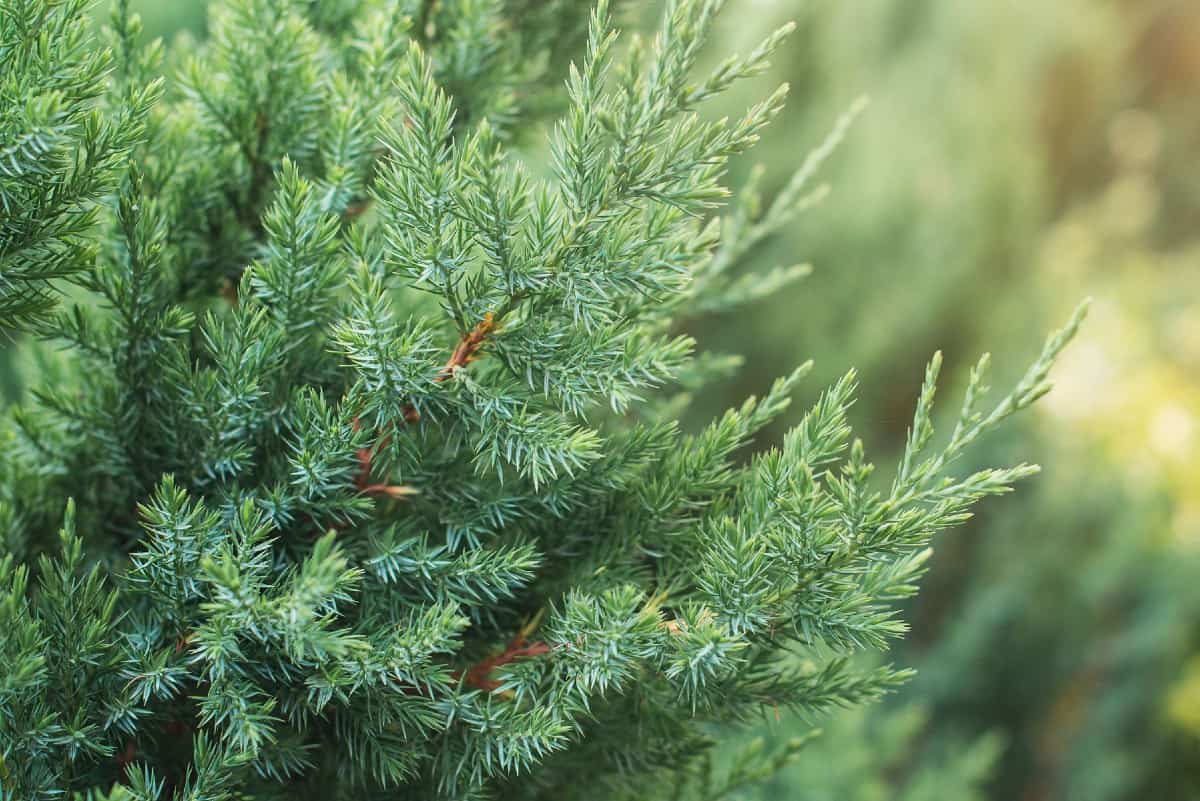
The Leyland Cypress is a popular choice if you need a screen in your backyard. Known for its columnar shape, it serves as an excellent privacy tree, as does its relative, the Italian Cypress. One of the reasons it does so well in forming a privacy fence is its dense foliage and ability to withstand extreme weather.
The Leyland Cypress grows well throughout the entire US and provides a splash of color to your yard all year long. Mature height of the Leyland Cypress is anywhere between 60 to 70 feet with a width of up to 25 feet. The tree offers a fast growth rate of more than 24 inches per year in the best growing conditions.
The tree provides blue-green scale-like needles that are soft to the touch and offers cones with eight scales that measure up to ¾ inch in diameter. Annual pruning and shaping do not harm the tree; when not pruned, standard shape ranges from an oval to a pyramid.
Weeping Willow (Salix babylonica)
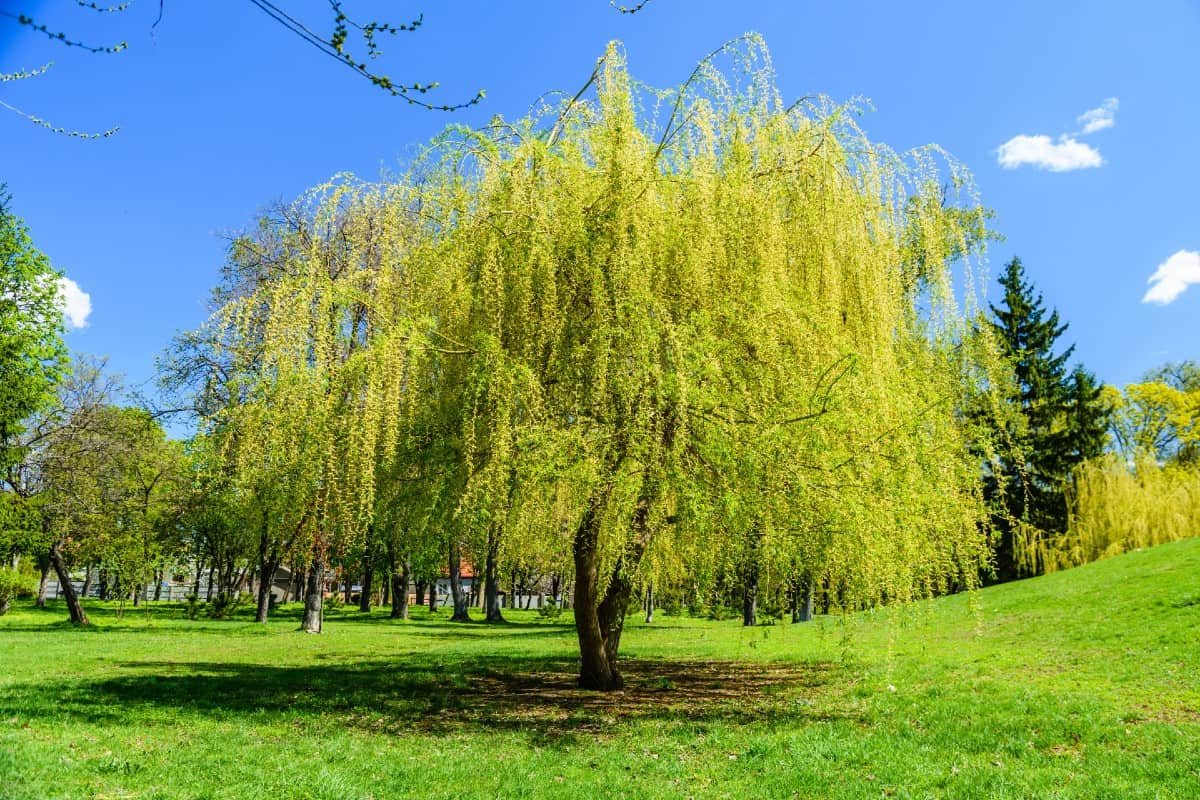
The Weeping Willow is a fast growing tree that is easily recognized by its open crown and branches that sweep down toward the ground. The tree grows well once established in zones 6 to 8 with a growth rate of more than 24 inches a year. Mature Weeping willows reach upwards of 30 feet with a width of about 35 feet.
Areas of full sun to partial shade are best for maximum growth. At a minimum, the tree requires four hours of direct sunlight. The Weeping Willow thrives well in a variety of soils, including loamy, acidic or alkaline.
The secret to the ground is drainage, especially clay soils. The Weeping Willow is not as drought tolerant as other trees, so grows best near a water source.
The long narrow leaves are light green with a finely toothed edge. Leaves begin to appear in early spring along with yellow flowers in April and May.
Green Giant Arborvitae (Thuja standishii)

If you are after a fast growing evergreen, look no further than the Arborvitae Green Giant. These beautiful evergreen trees grow up to three feet each year until they reach a mature height of 60 feet tall with a spread of up to 20 feet. This evergreen tree is ideal for a privacy screen as its dense cone shape works well as a screen or hedge.
This tree serves well as a windbreak as it withstands extreme weather, including snow and ice. The Thuja Green Giant offers green foliage that is dark in the spring, summer, and fall months before it changes over to a lovely bronze color for the winter.
The Green Giant handles various soil conditions and textures well, but avoid poor draining soil and soil that stays overly wet. The Green Giant is salt-sensitive, so plant far back from roads and sidewalks where salt runoff may occur.
For trees to grow by the pool, you can’t get much better than the Green Giant. Ensure that they are set far enough away that they don’t get splashed too much and you’ll have an excellent privacy screen around this popular area of your backyard.
Fast Growing Tree for Shade – Hybrid Poplar (Populus deltoids)
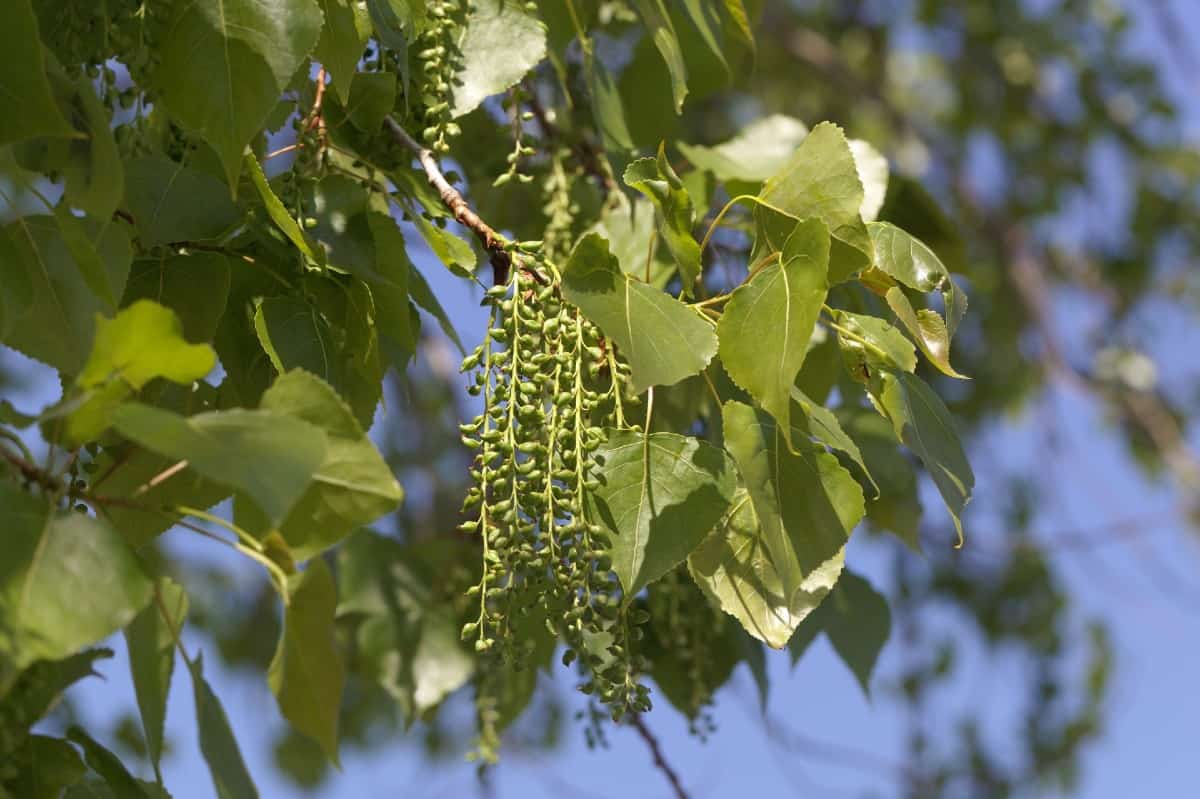
The Hybrid Poplar offers a growth rate of up to 8 feet a year with proper care. The tree is most often planted for those looking for shade, but when planted next to each other, it forms an excellent windbreak that offers plenty of privacy.
As fast growing shade trees, the Hybrid Poplar is a cottonless version that grows well in Hardiness Zones 3 to 9. The tree offers the broad-shape with larger silvery-green leaves making it ideal for shading specific areas of your yard.
This poplar reaches heights up to 50 feet and a width of 30 feet. Most trees reach full mature height within six years. Plant in full sun well back from sidewalks and away from play areas as limb breakage frequently occurs.
October Glory Maple (Acer rubrum)

This tree is a particular cultivar of the ordinary Red Maple and is an excellent choice for the beautiful look of the maple tree in a landscape without waiting for it to grow. The October Glory Maple offers dark green leaves during the spring and summer, but come fall, they change to a deep red color and stay on the tree for several weeks.
The October Glory Maple does well in hardiness zones 4 to 9 and reaches a mature height of up to 50 feet with a 35-foot spread. The typical growth rate of the Glory Maple is 13 to 24 inches each year.
Plant these maples in full sun, as they thrive on direct, unfiltered sunlight and require a minimum of four hours each day. The October Glory Maple grows well in various soil types, as long as they offer excellent drainage.
River Birch (Betula nigra)
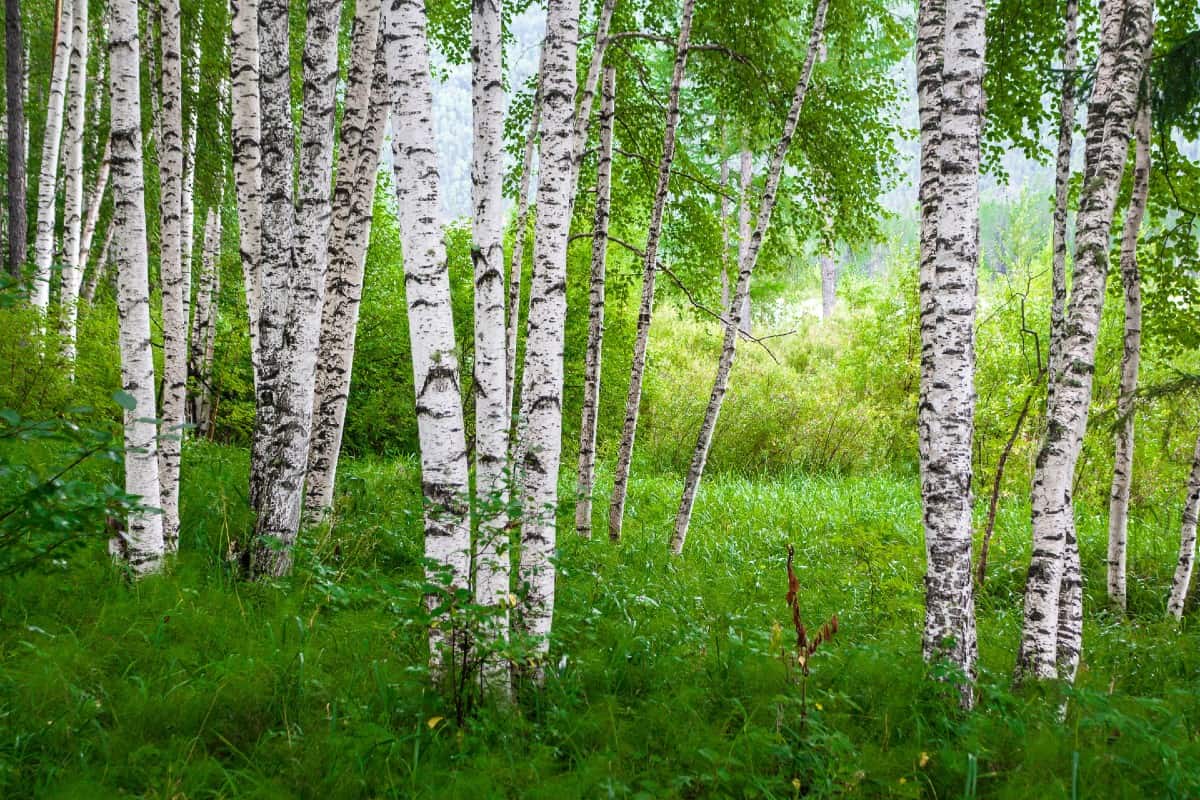
Most commonly found along riverbanks, the River Birch sees good growth throughout the United States. Most people opt for the River Birch thanks to its rapid growth rates, as well as its ability to tolerate wet and dry conditions reasonably well.
The River Birch offers a unique looking cinnamon-colored bark that curls away from the tree naturally with far-spreading limbs. While the tree will tolerate some flooding and drought, opt for locations that provide well-draining soil and a minimum of four hours of unfiltered direct sunlight.
For optimal growth, avoid planting these trees for wet soil in alkaline environments. The leaves are a triangular shape and offer a glossy green color with a double-toothed edge. In April and May, the tree produces green and brown catkins, which are fully mature female trees that turn into nutlets in May and June.
Quaking Aspen (Populus tremuloides) – Fastest Growing Tree for Yards

If you are after the tree with the fastest growth rate, look no further than the Quaking Aspen. At full height, aspens reach up to 50 feet with a width of 20 to 30 feet. Considered both an ornamental tree and a shade tree, Quaking Aspens offer a canopy of leaves to block out sunlight effectively.
Although they have the broadest natural range and grow well in zones 1 through 7, they are not ideal for every location. When selecting a location for these quick-growing trees, opt for one that receives a minimum of four hours of direct sunlight.
Quaking Aspens love full sun but do well in partial shade and require a lot of moisture. During the fall, the tree offers a lovely yellow color, but what it is known for is the movement it adds to your yard and the sound of the leaves.
Dawn Redwood (Metasequoia glyptostroboides)
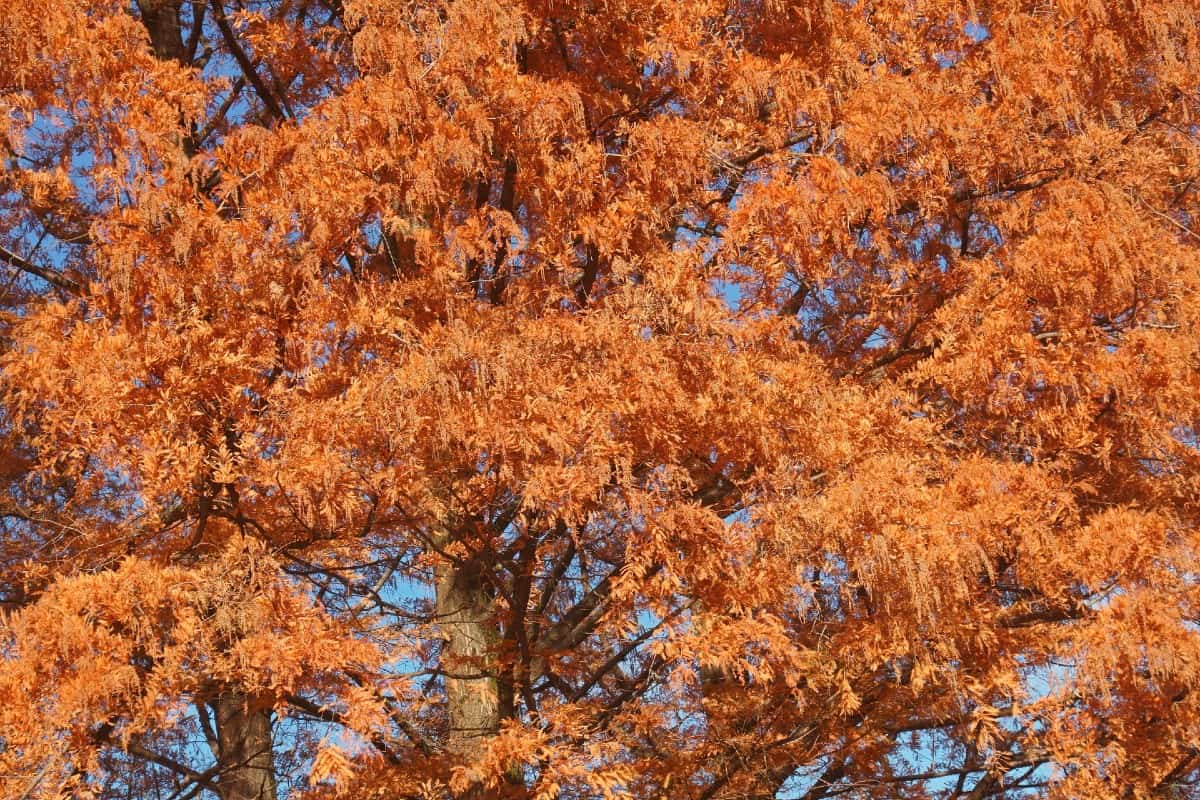
The Dawn Redwood is not only one of the fastest-growing trees, but it is also one of the oldest species found. These deciduous trees are known for producing small cones measuring up to 1 inch. The tree grows pyramidal while young, but turns into a rounded crown once fully mature.
The Dawn Redwood offers feathery leaves that are green until they turn reddish-brown to orange-brown in the late fall. Dawn Redwoods are easily transplanted, but when transplanting, opt for locations that provide full sun and moist soil with excellent drainage.
It is interesting to note that these are some of the fastest-growing trees around and will grow up to 100 feet once fully grown in zones 5 to 8. Damage to these trees occurs during early fall freezes if the roots are not well established. Transplant early enough to allow roots to take hold and avoid low lying areas.
Nellie Stevens Holly (Ilex x ‘Nellie R. Stevens’)
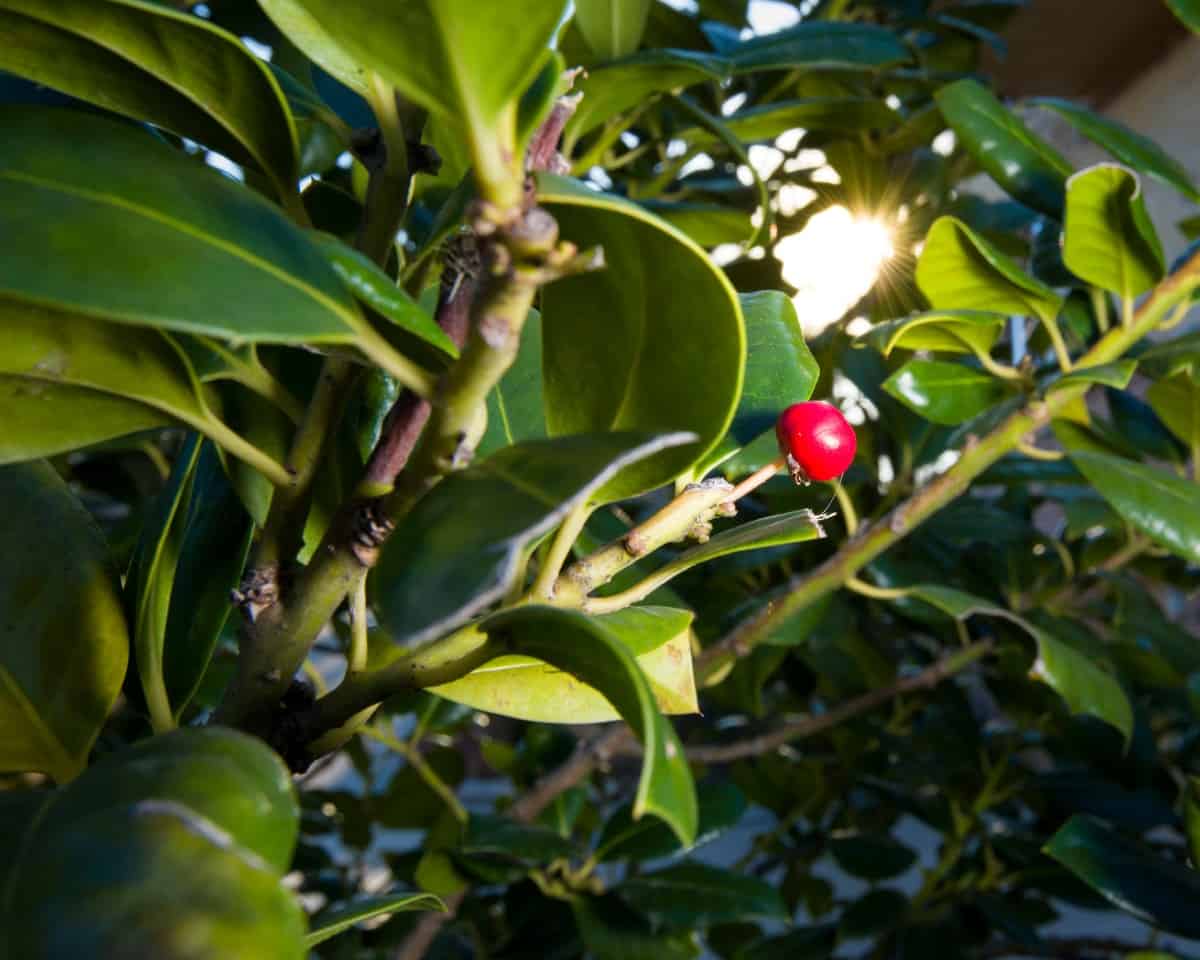
Almost all holly bushes are evergreen shrubs; the Nellie Stevens Holly is one of the taller varieties that doubles as a tree or a shrub. Like the Privet, it is classified as a broadleaf evergreen and is a fast grower. The Nellie Stevens Holly reaches heights of up to 30 feet and spreads out about 15 feet, all while forming a pyramidal shape.
Featuring dark green, spiny leaves with round red berries, this tree thrives in zones 6 through 9. Nellie Stevens Holly is a low-maintenance option as it retains its shape without a lot of pruning. It also isn’t very prone to pest damage.
The only pruning required is of the lower branches for those that want to give it a tree-like appearance rather than a shrub — prune branches to bring inside to decorate for the holidays. Use the bushes to form a wall to act as a privacy screen in your front yard or home.
Fastest Growing Trees – Eastern White Pine (Pinus strobes)
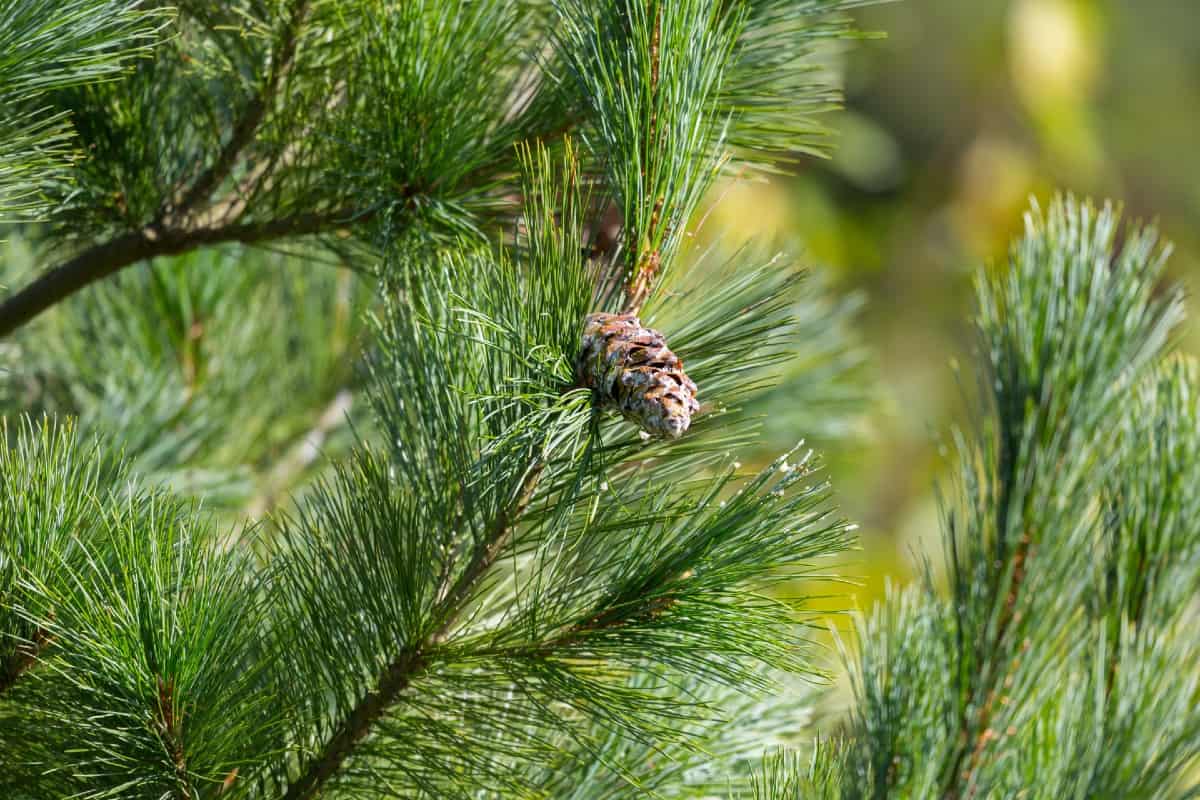
If you want a fast growing tree for privacy, do we have a tree for you. The Eastern White Pine is among the most popular choices for fastest growing pine trees for privacy as it grows more than 24 inches each year.
Mature height of this tree is anywhere from 50 to 80 feet tall with a 20 to 40-foot broad base. The size and shape of the Eastern White Pine make this tree an excellent choice for a privacy screen or a windbreak in zones 3 to 8.
When selecting the ideal location for the Eastern White Pine, look for one that offers a minimum of four hours of direct sunlight. This tree tolerates moist and dry conditions, but the soil must be acidic with excellent draining capabilities. The Eastern White Pine often serves as a Christmas tree with its blue-green needles that reach about five inches long.
Emerald Green Arborvitae (Thuja occidentalis)

Not one of the larger species of arborvitae, the Emerald Green is a semi-dwarf variety with a narrow pyramidal shape. The bright green foliage is glossy in appearance and features urn-shaped cones that are reddish-brown in the fall months. Emerald Greens range in height from 7 to 15 feet, but some are as tall as 20 feet.
These are a popular choice for screens and hedges in colder climates. The Emerald Green handles a range of different soil types and conditions, but optimal growth occurs in loam soils with a neutral to slightly alkaline pH.
The secret to the ground is to keep it moist but well-drained. Lighting requirements for this tree are full sun in colder climates, while partial shade is necessary for hotter areas. Avoid full shade as it reduces foliage density.
Sky Pencil Holly (Ilex crenata)

These columnar shaped flowering trees are not the fastest-growing option but are an excellent choice for landscapes with tight and limited spaces or lots of corners. The Sky Pencil Holly features smooth-edged leaves, more like the Boxwood than other holly shrubs.
The greenish-white flowers are not very impressive to look at, but the black colored berries produced when pollination occurs attract a variety of wildlife. Sky Pencil Holly reaches up to 10 feet tall but is not very wide, which is why they work great in corners.
A six-foot-tall tree may only have a 14-inch width at its widest point. The shrub is narrowest at its base and gently fans out the higher it grows. Sky Pencil Holly requires full sun for optimal growth. While it tolerates shade, it drastically slows down its growth.
Boxwood (Buxus) – Fast Growing Trees for Privacy

One of the most versatile options, Boxwood, works well as a regular or low lying hedge, as well as an edge, topiary, or container plant. Even during the cold winter months, Boxwood provides a vibrant green color that allows it to serve as a focal point in any yard.
In the warmer summer months, the same green color appears but blends in well with other foliage rather than standing out. Different species offer different growth rates, as well as size, shape, and hardiness. Boxwood grows well in a variety of soil conditions, as it is one of the most adaptive plants.
The key to keeping the Boxwood happy in various soil conditions and types is ensuring it offers excellent draining. Boxwoods suffer from root rot if left in standing water or overly wet soil.
Never expose these shrubs to wind prone areas, especially in the winter. Lighting requirements range from full sun to partial shade, as long as they are protected from harsh winds.
Strawberry Tree (Arbutus unedo)
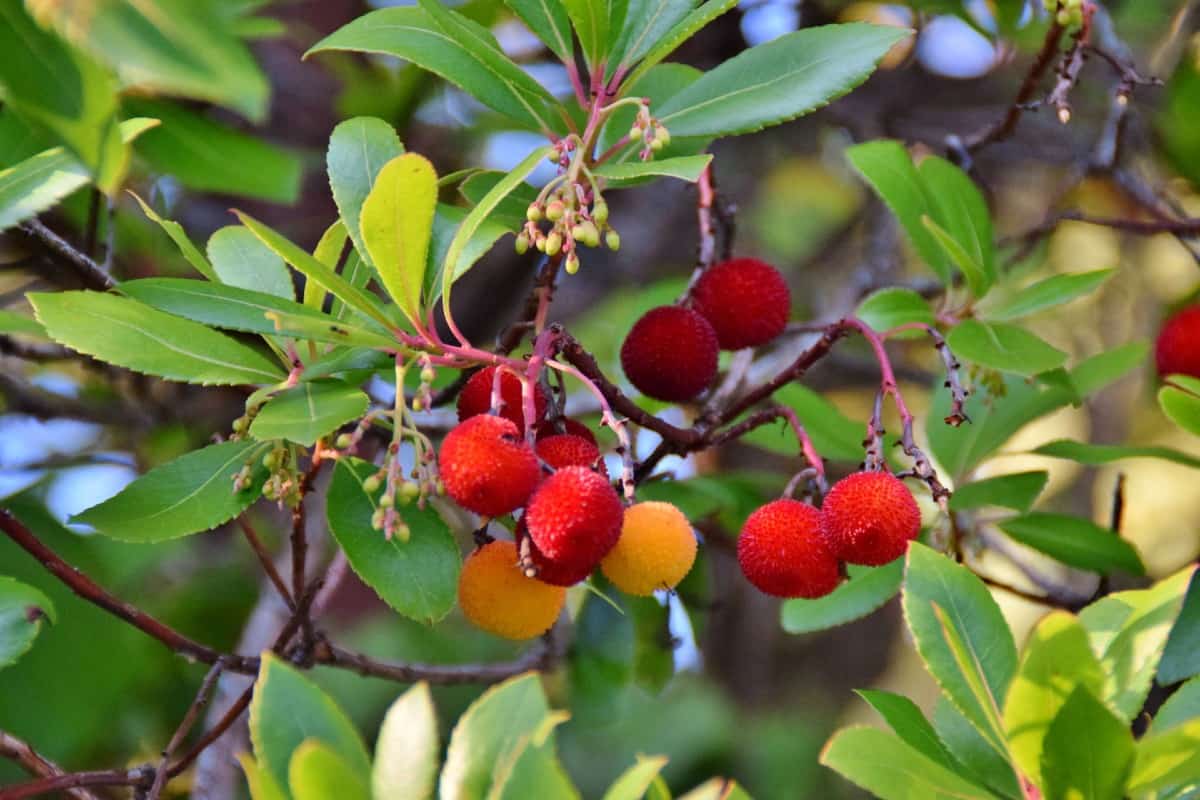
Not as fast-growing as other fruit trees, the Strawberry Tree is not a typical fruit tree as it does not produce actual strawberries. The good news is that it is a fruit tree, as it does produce small edible fruits among its branches that are used in preserves, liqueurs, and wines.
It only sees about 12 inches of growth a year, but when you compare that growth rate with its mature size of 15 to 30 feet, it doesn’t grow nearly as slowly as some other trees. When selecting a location for the Strawberry Tree, opt for one that receives a minimum of four hours of unfiltered sunlight.
Look for areas with well-draining soils that are not prone to severe droughts. The white to pink flowers of this tree bloom from October to December, and the drupes produced by the Strawberry Tree reach one inch in diameter and are ripe by fall.
Whether you want to grow vines for privacy along your perimeter fence or prefer a more natural look with trees, we have some excellent ideas from which to choose. The hardest part is selecting the variety.

Thanks for taking the time to learn more about the fastest growing trees you can plant at home. If you found some of our ideas on fast growing trees useful, please share our thoughts on the best fast growing trees for privacy in your yard on Pinterest and Facebook.